THE IMPORTANCE OF FASCIA TO ATHLETES

Athletes are very hard working people. When we say hard working, they push their bodies to their very limits in order to be great. In reward of their hard work, they receive the grandest of recognition than anyone could ever want.
But, despite of the pride and glory they rejoice in, being an athlete does not come easy. It takes a lot of sacrifice to be one successful athlete. Especially, sacrificing their health and bodies. They work an approximate of 13-20 hours a day and discipline their lifestyle in general, to reach the results they want for themselves. Indeed, it is not easy. It can make us question how are they able to cope with it.
One of the biggest, mind-bottling sorcery from athletes is their bodies. It works extraordinarily incredible that we can not understand how. Despite of that, the reality is that their body is not that of superman’s at all. They can be hurt and in pain just like normal people do. It’s just how the way they cope with it.
One of the important part of the anatomy is the Fascia. The Fascia gives off advantages to people, especially athletes.
What is Fascia?
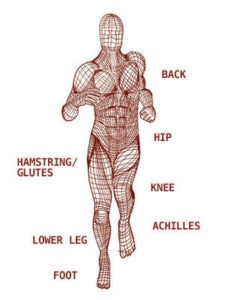
Well, according to Wikipedia, the Fascia is a band or sheet of connective tissue, primarily collagen, beneath the skin that attaches, stabilizes, encloses, and separates muscles and other internal organs. Fascia is classified by layer, as superficial fascia, deep fascia, and visceral or parietal fascia, or by its function and anatomical location.
Like ligaments, aponeuroses, and tendons, fascia is made up of fibrous connective tissue. It contains closely packed bundles of collagen fibers oriented in a wavy pattern parallel to the direction of pull. Fascia is consequently flexible and able to resist great unidirectional tension forces until the wavy pattern of fibers has been straightened out by the pulling force. These collagen fibers are produced by fibroblasts located within the fascia.
Fascia are similar to ligaments and tendons as they have collagen as their major component. They differ in their location and function: ligaments join one bone to another bone; tendons join muscle to bone; and fasciae surround muscles or other structures.
3 Types of the Fascia
Superficial Fascia
The Superficial Fascia is the layer that is found at the most bottom of our skin. This type of Fascia is composed of loose areolar and adipose connective tissue. Basically, the superficial Fascia is the layer that ensures how the body is originally shaped.
Visceral Fascia
This type of layer is also called as the subserous fascia. Primarily, the function of this layer is to strongly sling the organs with their neighboring cavities. As well as, to enclose them in several layers consisting of the connective tissue membranes.
The Visceral Fascia is relatively less elastic than the Superficial Fascia. Therefore, it needs to keep its shape in place. Visceral Fascia needs to make sure that it is toned and consistently maintain it in that form. If it is too slack, it may cause the organ to slip or fall out from its place. If it is too hypertonic, it limits the organs’ motility.
Deep Fascia
The Deep Fascia is the layer that surrounds every muscle in the body. Another function of which is that it separates groups of muscles into fascial compartments. This layer of fascia is capable of responding to sensory receptors.
The Main Function
In Anatomy, the function of muscle fascia is to alleviate the cases of friction when muscles are used through force. In that light, the fascia serves as a means of support and external enclosure for the nerves and blood vessels. This is to give easy access for them to pass through and fro the muscles.
With all that being said, let us now move away from all the scientific-related terms and get down to business. This article will be telling you the importance and use of the Fascia. Not just for athletes in particular, but for everyone.
IMPORTANCE OF FASCIA
1. Fascia is a Fluid-Support system
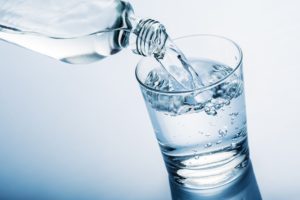
It is hard to imagine how one thing can be hard and “fluidy” at the same time. But, it is very much possible, especially for the Fascia. Basically, the fascia is the best of both worlds.
For us to understand this clearly, let us try to compare the fascia to a simple sponge. A sponge turns hard and brittle when left alone to dry for a very, very long period of time. Due to that, it can be easily broken or crushed, right? But, when a sponge is maintained in its wet form, no matter how hard you try deforming it (except for cutting it with a pair of scissors) it eventually goes back to its original form.
So, the fascia is relatively like the sponge. Always remember that analogy, for you to give more importance to the fascia. It is important to keep the fascia, or body in general, hydrated. The energy, mobility, flexibility and ability to cope up with physical activities highly depends on how hydrated our fascia is.
2. Move in Variations
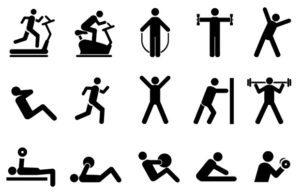
Staying hydrated is not the only key to maintain a toned and healthy fascia. Also, drinking water is not the only way to stay hydrated, especially for the fascia.
Moving, is another way for the fascia to refrain from getting brittle and dehydrated. With physical activities being done, the fascia can be well-irrigated. However, moving alone is not enough. You need to do these in variations and different speeds.
What this article means by variation, is the workout regimen you do on a daily basis. May it be working out in the gym or as simple as a work-grocery-home-sleep kind of a routine. Either ways, you have to switch up your routine in a way your fascia will have a hard time memorizing.
In addition, the term moving does not solely refer to physically being active. As a matter of fact, taking a rest can be considered as a part of your daily routine. Why is that? Because, Tom Myers the fascial educator and creator of Anatomy Trains, once stated that the fascia works like the sands on the beach. Once you step on the sand, the water is pushed out from it. But, once you lift your foot up, the water comes seeping back in.
It is the same with the Fascia, the more you physically challenge it, the more water you pour out. But, when you take a rest, you are giving the fascia enough time to quench its thirst. So, allow your daily activities or routine to have a few rest in between. This is to ensure that your fascia stays hydrated and healthy.
3. Every Part is Interconnected
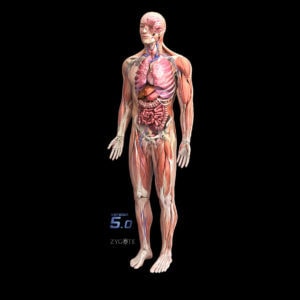
Once in our middle-school days, we have come across the idea that every part of our body can be attached or detached. We just can’t do it ourselves because it is glued or taped by a magical, out of the world, sticking tool. But, as soon as we age, we grasped now a clear understanding that the body is not composed of one giant muscle, tendon or ligaments. However, it is made up of several pieces and groups of such parts.
Because of that understanding, we had developed the common misconception that the result of a third grade knee bruise, is not the reason why our knees ache after a 2-hour jog yesterday. As a matter of fact, they can be related. Well, the case my be a little exaggerated, but you get the point.
For example, your are a junior elite member of your school’s gymnastics team. While doing your routine, you slipped and hurt your neck. But, because the nature of gymnastics is to tumble and fall, you shake the pain off and wait until it “heals” back. Then, you entered college and focused on finishing late night papers for your professor due the next morning. Suddenly, you felt a sharp pain on your shoulder area. You brushed the pain off, and thought that you’re just tired from all the pain and tension you create while typing. As years passed by, the pain now comes down to your back area. You start to have occasional cramping spasms, which you assumed it’s the result from carrying heavy bags of groceries. I can go on and on and on with all these pain happening to this person, but you already get the point.
Everything is interconnected. It works as the same as the domino effect. One pain can lead to another one. It may not be at the same time or right after that, but it works gradually.
The very reason why an infinite chain of pain will happen is because you just ignored the first one. The reason behind the cramps and discomfort of your muscles and tendons, is because you are not taking good care of your fascia. The tip to prevent this matter, is to take good care of your fascia.
4. Healthy Fascia means Improved Physical Abilities

When you are able to ensure that you Fascia is healthy, the results are amazing. It gives you the ability to, somewhat, defy gravity. Of course, in a way where human’s are capable of. Such as running, jogging, sprinting, throwing an object and other physically-related actions. When your Fascia is healthy, the effect of it towards these physical actions would improve significantly. You would be able to jump higher, run faster and throw farther.
It would be a huge advantage for athletes. The more you keep your fascia healthy and hydrated, you are improving the “natural spring” you have in you. Which means, the less you use your muscles, the more you maximize your innate trampoline and the less tiredness you feel.
5. The Next Largest Organ in the Whole Body
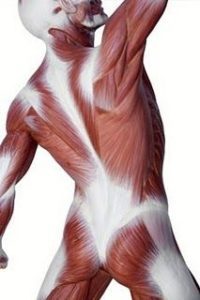
A surprising fact about the Fascia is that it receives and responds sensory stimuli better than our muscles. According to some research, it performs five to 10 times better. Due to the number of sensory nerve receptors it has, which is relatively greater than the muscles.
Therefore, the fascia plays an important role in body coordination, balance and direction. That is if you keep your fascia healthy and well-hydrated. With this, you are enabling your body to perform in its fullest potentials and cope to external stimuli to its maximum. Such as, recovering quickly from a minor injury and effectively performing daily activities.
So, basically, the two major things that you have to remember when it comes to taking care of your fascia are: Keeping it hydrated and Moving it in variations. With these two, you are able to take care of your fascia and help your body perform to the best of its abilities.
We can talk more about fascia and how it is “Fascianating” when it comes to people and athletes. But, it would take us another full day to cover everything. Also, it is to much to take in now. So, I am leaving you with the important tips for now.
